A Glimpse into the World of Numismatics
Numismatics, the study and collection of coins, medals, paper currency, and related items, offers more than a hobby—it’s a gateway to history, culture, and even financial opportunity.
This unique field connects enthusiastic coin collectors with the stories of civilizations, artistic achievements, and the evolution of commerce.
In today’s market, numismatics holds vast potential for both collectors and entrepreneurs. Rare coins and historical artifacts aren’t just treasures; they’re assets with immense value and a loyal, passionate community of numismatists.
I first encountered the world of numismatics while helping a client – an advanced coin collector who gave me a beautiful gift. A silver coin – 1 Ellenic palm, which I have placed on my desk ever since.
This interaction led me to research the numismatic market deeply for over 3 months last year.
As I was researching the market, I quickly realised that this space is full of financial opportunities.
To succeed, aspiring numismatists must combine knowledge with strategy. By mastering the fundamentals, staying ahead of trends, and building strong networks, it’s possible to transform a personal interest into a thriving business. Whether you’re drawn by a passion for history or the promise of profit, numismatics offers a path rich with possibilities.
Let’s dive into this fascinating world το uncover its secrets.
The Numismatic Industry | Coin-Collecting Business Guide
Quick Navigation
- Introduction
- Rules of Successful Coin Collecting
- Business Organisation & Administration
- Market Research and Planning
- Trends
- Statistics
- Niche Business Opportunities
- Brand Building (Big Ideas #1)
- Strategy and Action Plan (Big Ideas #2)
- Product Development and Management
- Marketing
- Customer Experience & Engagement
- Economics
- Social Image & Responsibility
- Risk Management
- Innovation
- Numismatic Glossary
- Startup Ideas
- Case Studies/Real-Life Examples
- A Unique Niche: Coin Shows & Events
- Epilogue
Introduction
Numismatics: A Passion That Pays Off
Coin collecting goes back in time, captivating people for centuries.
Common characteristics of collectors include a passion for history, art and rarities. It usually starts as a hobby, but oftentimes, it evolves into something deeper.
Every coin has a unique story behind it, from ancient civilizations and legendary rulers to modern commemorative and artistic issues that mark significant events.
But numismatics isn’t just about collecting; it’s also a thriving business.
With rare coins fetching thousands—even millions—at auctions, and an ever-growing community of collectors, the numismatic market presents real opportunities for those who act strategically.
Success in numismatics, as with any industry, requires knowledge, planning, and a keen understanding of market dynamics. If you’re willing to put in the effort, you can turn your passion into profit.
Let’s explore how.
A Hobby That Can Build Wealth
The numismatic market is dynamic, with rare coins appreciating in value over time.
Some coins that once traded for a few dollars now sell for thousands, and record-breaking auctions prove that numismatics is not just a niche interest but a serious investment.
Beyond individual collecting, there are multiple ways to profit—from dealing in rare coins, organising events and offering grading services to building an authoritative brand in the industry.
Numismatics offers a pathway to both personal fulfillment and financial growth, and succeeding as a business owner requires research, passion or expertise, and a strategic approach.
Historical Significance Of Coin-Collecting
Numismatics is a bridge to history. Coins have told the stories of civilizations for millennia, reflecting the economies, politics, and cultures of their time.
Acquiring rare, ancient, or commemorative coins is not just a commercial transaction, it’s a journey in history.
But beyond their historical and monetary value, coins represent something deeper—a timeline of human achievement and progress. They demonstrate how communities and cultures evolved.
Holding a rare coin is like holding a piece of history in your hands, a relic that has survived wars, economic shifts, and the rise and fall of empires.
For collectors and investors alike, this mixture of legacy and opportunity makes numismatics a truly compelling and satisfying pursuit.
A Unique And Special Industry
The coin-collecting industry stands apart due to its blend of history, artistry, and financial potential.
Coins are miniature works of art, showcasing craftsmanship and design that reflect the values and aesthetics of their time.
This blend, along with its investment appeal, creates a diversified market where collectors, investors, and entrepreneurs can thrive.
Each transaction holds immense value—economic, historical, or sentimental—making numismatics a truly unique field.
Another element that sets this industry apart is its ever-growing global appeal and versatility.
Coin collecting goes beyond countries and borders, attracting enthusiasts worldwide and offering a diverse marketplace with opportunities in niche specializations, rare finds, and mainstream bullion investments.
Coins are also financial assets, often appreciating in value and providing security against economic fluctuations.
Additionally, the industry thrives on community and knowledge-sharing, with collectors emotionally connected to their finds while expanding their expertise in history, valuation, and trade.
This combination of cultural and historical significance, financial stability, and passionate engagement makes numismatics one of the most rewarding industries to explore—whether as a hobby or a full-time business venture.
Rules of Successful Coin Collecting
Best Practices and Guidelines
To become successful in coin collecting, you first need knowledge. Patience, persistence, and a keen eye for quality are precious add-ons.
Always research before making a purchase, ensuring that coins are authentic, well-preserved, and fairly priced.
Learn the basics of grading and invest in reputable references or professional appraisal services to avoid mistakes that could cost a fortune. Handle coins with clean, dry hands or wear cotton gloves to prevent oils and dirt from damaging their surfaces.
Store coins properly in acid-free holders, albums, or slabs to maintain their condition.
Finally, approach collecting with both passion and discipline—whether you’re buying for historical interest, investment, or personal enjoyment.
Be thoughtful and strategic for long-term success.
Coin Collecting Equipment
Having the right tools is essential for preserving and evaluating your collection.
A magnifying glass or loupe with at least 5x–10x magnification helps inspect fine details and detect counterfeits.
Soft cotton gloves prevent fingerprints and tarnishing, while coin tongs or soft pads ensure safe handling.
A high-quality coin album, flips, or airtight holders protect against environmental damage.
A digital scale and caliper help verify dimensions and authenticity, especially for rare or high-value pieces.
Investing in a UV light and reference books on numismatics will further equip you to authenticate and appreciate your coins with confidence.
Dedicated Workspace
Creating a dedicated space for your collection can help you stay organized and protect it efficiently.
A well-lit, dust-free environment with a stable temperature and low humidity prevents deterioration. A sturdy desk with soft padding or felt can help avoid accidental drops or scratches.
Secure storage solutions, such as fireproof safes or lockable cabinets, can protect you against theft and environmental threats.
A cataloging system—digital or physical—can help you track acquisitions, values, and historical data.
A well-maintained workspace fosters a professional approach, identical to your expensive hobby, ensuring your collection remains in top condition for many years to come.
Common Mistakes to Avoid
New collectors often make mistakes that can be costly. One of the biggest errors is impulse buying without proper research, leading to overpaying or acquiring counterfeit coins – which look identical to the original but are not.
Mishandling coins—such as cleaning them with abrasives—can drastically reduce their value. Storing coins in improper conditions, like humid environments or PVC-based holders, can cause corrosion and discolouration.
Ignoring market trends and failing to diversify your collection can also limit your potential.
Avoiding these mistakes requires patience, education, and a commitment to upgrading your knowledge and skills.
Tips from Experienced Collectors
Experienced numismatists recommend specialization—focusing on a particular era, country, or type of coin. This approach can deepen your expertise and improve your investment decisions.
Joining collector communities, forums, and attending coin shows are essential if you want to expand your network and connect with experts. Staying updated with market trends and auction results can help you identify valuable opportunities.
Many collectors suggest prioritizing quality over quantity—choosing fewer high-grade coins over a large number of lower-quality pieces. This strategy leads to greater long-term value but requires patience.
Lastly, always collect with passion—whether for history, artistry, enjoyment or investment. Being genuine is what makes this journey more rewarding.
Business Organisation & Administration
Basic Skills and Entrepreneurial Mindset
Building a successful coin-collecting business requires a mix of technical expertise and business skills.
Understanding coin grading, authentication, and valuation is crucial for making informed buying and selling decisions.
Marketing and sales skills can help you attract customers and negotiate profitable deals, while financial management can help you with smarter budgeting and reinvestment strategies.
On top of that, a strong network of experts, hobbyists, dealers, auction houses or other numismatists who can share valuable advice will help you identify rare finds and form strategic partnerships.
Moreover, adaptability, resilience, and a forward-thinking approach are a must.
As an entrepreneur, you must be willing to take calculated risks, stay patient through market fluctuations, and continuously learn from past experiences. Seeing setbacks as learning opportunities rather than failures can make all the difference in long-term success.
Additionally, staying curious and open to industry innovations, such as digital auctions and blockchain-based authentication, can help you stay ahead of trends and leverage new opportunities.
Discipline and dedication. Unlike casual collectors, as a business owner, you are responsible for multiple operations, from sourcing inventory and maintaining records to managing customer relationships, deals or partnerships, and handling logistics.
The market can be unpredictable with hard-to-identify trends and price fluctuations but also filled with new opportunities.
Business owners often work long hours, especially when attending auctions, networking events, or managing online sales.
If you embrace these challenges with persistence and efficiency, you will reap the rewards.
Mastering these skills lays the groundwork for a thriving, sustainable business.
Action Framework
To be successful in this space, and any other industry as well, you need to take action.
However, this is where you need to pay attention and organise your business in such a way that it is sustainable, has the potential to grow, and also gives you the freedom to enjoy your personal life.
Not all actions, though, lead to great results.
A business owner should act following a framework within which the company operates smoothly, can adapt quickly to changing conditions, and continues progressing to reach its goals and objectives.
The starting point of this framework, part of the “7 IDEALS” methodology, is assessing the environment of the business.
We examine the external macro environment, broad factors affecting the business, regardless of the industry. Economic conditions, technological advances, and socio-cultural trends.
We also examine the external micro environment, factors that have a direct impact on the business and its operations. Competitors, suppliers, and customers.
We, then, examine the internal environment, factors within the organisation that influence its operations and performance. Company culture, internal policies, and employee dynamics.
When we understand the connection of all those factors, we can navigate challenges, seize opportunities, and align our strategies with both the external and internal environment of our business.
The next step is to set goals and objectives. This sets the base for our overall business strategy, as we’ll discuss below. We can’t become strategic without analysing the environment and setting goals and objectives.
Goals (broad, general statements of intent) and objectives (specific, measurable targets that support the achievement of those goals) should be clear and communicated in such a way that everyone in our company understands them.
They should be SMART (specific, measurable, achievable, relevant and time-bound).
Well-defined goals and objectives can make all the difference in regards to decision making, performance, and measuring success.
Basic Functions of Administration
- Programming/Planning
- Organising
- Managing
- Leading
- Coordinating
- Controlling
- Staffing
- Directing
- Motivating and incentivising
- Creating
- Being productive
- Auditing and optimising
- Innovating
When we implement those components effectively, we can achieve our goals and thrive in any business environment, no matter how complex it is, as it happens with numismatics.
The next step in the methodology is to organise the business by main operations, organisation and management, marketing, production and supply chain, financial management and economics, human resources, and so on.
This separation of the main operations gives us a unique advantage to maximise our performance and deal with unexpected changes and unforseen challenges down the road.
I strongly recommend that you go through the following resources to upgrade your entrepreneurial mindset and skills.
Related Guides:
- Business Organisation & Administration: Thesis
- The Demanding Role of a Business Owner: Leading Towards Success
- Business Playbook (short video series)
- Common Characteristics of Successful Entrepreneurs
- Embrace Failure and Learn From It
- 12 Powerful Productivity Hacks For Business Owners
- 80+ Reasons Why Marketing Has Strategic Significance
- How To Impact The World As An Entrepreneur
- The Beginner’s Ultra Guide to Making Money Online
- and many more on the blog
Market Research and Planning
Everything in business starts with marketing, and more specifically, with market research, and the first step in this process is understanding our customers because, without customers, there is no business.
First, you need to study consumer behaviour, why people buy coins and build collections, what they want to avoid, how they perceive brands and marketing approaches, how much they are involved with coins, and so much more.
Then, you want to investigate the numismatic industry as a whole by examining all the stakeholders:
- Coin collectors
- Hobbyists
- Consumers
- Dealers
- Grading services (e.g., NGC, PCGS)
- Suppliers
- Authenticators
- Associations
- Auction houses
- Coin clubs
- Numismatic researchers and historians
- Museums and cultural institutions
- Educators and writers
- Appraisers
- Bullion dealers
- Precious metals refiners
- Coin designers and engravers
- Coin manufacturers and mints
- Online numismatic platforms
- Marketplaces
- Consultants
- and more.
On top of that, studying competitors and analysing their strategies, activities and presence in the market are essential.
Market research provides insights into trends, collector preferences, and market demands.
Planning, on the other hand, involves forecasting market trends, mitigating risks, and aligning your business goals with market opportunities.
It helps you get prepared for changes in the numismatic landscape so you can seize emerging opportunities and safeguard your investments against potential risks.
Market research and planning are crucial for coin-collecting entrepreneurs for several reasons:
- Understanding Market Trends
- Targeting the Right Audience
- Assessing the Competitive Landscape
- Optimising Pricing and Valuation
- Risk Management
- Strategic Decision-Making
- Customer Insights and Feedback
- Adapting to Market Changes
- and more.
I’ve already analysed the numismatic industry thoroughly and segmented the market into different groups, as I explained in the introduction. More on that below-in the dedicated section.
Related Guides:
- Introduction to Consumer Behaviour
- Consumer Decision-Making Process: In-Depth Analysis and Book
- The Art and Science of Consumer Involvement
- Decoding Consumer Perceptions
- Consumer Analysis and Marketing Strategy: A Practical Journey Through 7 IDEALS
- Identify and Reach Your Target Audience
- 20+ Reasons Why Keyword Research Is Important
Trends
By studying and analysing trends, we stay relevant and competitive, anticipate changes in consumer behaviour, and identify opportunities for growth and innovation.
Current Key Trends:
- Increased Digital Engagement: Collectors are buying and selling coins through online platforms like eBay, Heritage Auctions, and specialized numismatic sites and marketplaces. We witness a shift to online auctions allowing collectors to participate in real-time bidding.
- Certification and Grading Services: The demand for third-party grading services (e.g., NGC, PCGS) is rising as collectors seek assurance of authenticity and quality.
- Themed and Commemorative Coins: Celebrating historical events, famous personalities, and cultural icons are very appealing.
- Bullion Coins: The popularity of gold and silver coins remains strong due to their intrinsic value.
- Technology Integration: Some companies are exploring the use of blockchain technology and non-fungible tokens (NFTs) for coin authenticity verification and ownership tracking.
Future Market Predictions:
- Sustainability and Ethical Sourcing: Collectors may prefer coins made from sustainably sourced metals and produced under fair labour practices.
- Augmented Reality (AR) and Virtual Reality (VR): These technologies could enhance the collecting experience by allowing collectors to view and interact with coins in a detailed and immersive way.
- Personalized and Custom Coins: The number of collectors who desire unique, one-of-a-kind pieces is growing.
- Younger Demographics: The industry will likely focus on engaging younger audiences through educational programs, gamified collecting experiences, and social media presence.
- Globalization: Collectors from regions such as Asia, Africa, and Latin America are increasingly participating in the global numismatic community.
- Technological Innovations in Security Features: Advances in minting technology will continue to improve security features on coins, making counterfeiting more difficult.
Strategic Recommendations:
Embrace digital channels such as online platforms for sales and auctions, digital marketing, social media, blogs, and online communities.
Partner with reputable grading services to attract serious collectors.
Create and market themed collections with unique designs by collaborating with artists and historians.
Provide educational and entertaining content and resources such as virtual events, webinars and interactive challenges.
Explore the use of AR, VR, blockchain and NFTs to offer new ways for collectors to interact with and verify their coins.
By staying informed about these trends and strategically adapting to them, you can position your business for success.
Statistics
The numismatic industry is experiencing significant growth, driven by increasing interest in coin collecting as both a hobby and an investment.
Market Growth & Size
- Global Market Expansion: The global coin collecting market was valued at approximately $35.5 billion in 2024 and is projected to reach $77.3 billion by 2034, growing at a Compound Annual Growth Rate (CAGR) of 8.1% during this period.
- North American Market: In North America, the coin collecting market was estimated at $2.7 billion in 2025 and is expected to grow to $4.8 billion by 2031, with a CAGR of 7.5%.
- Digital Collectibles: The integration of technology has led to the emergence of digital coin collectibles, including NFTs, attracting a new generation of collectors and contributing to market growth.
Audience Size & Demographics
- American Numismatic Association (ANA): The ANA boasts nearly 24,000 individual members, reflecting a robust community of coin enthusiasts in the United States.
- Global Reach: Coin collecting is gaining popularity worldwide, with significant growth observed in regions like Asia-Pacific, where increasing disposable incomes and cultural interest are driving the market.
Coin Shows & Events
- Local Events: The Central Illinois Numismatic Association’s 35th annual Spring Coin Show featured 70 dealer tables and attracted a diverse group of collectors and dealers.
- Global Exhibitions: The increasing number of coin shows and exhibitions worldwide provides platforms for collectors to showcase their collections and acquire new pieces, further supporting market growth.
Regional Highlights
- United States: Leading the market with an estimated revenue of $10.4 billion in 2023, reflecting a strong tradition of coin collecting.
- United Kingdom: The second-largest market, with an estimated revenue of $5.2 billion in 2023, showcasing a rich numismatic heritage.
- Emerging Markets: Countries like China and India are experiencing rapid growth in coin collecting, driven by economic development and increasing interest in cultural preservation.
Key Companies in the Coin Collecting Market:
- Kitco Metals
- MCM Group
- Numismatic Guaranty Corporation
- Heritage Auctions
- Professional Coin Grading Service
- Christie’s
- Apmex
- Stack’s Bowers Galleries
- Spink Son
- BullionVault
- Coin Invest Direct
- GreatCollections
- Krause Publications
- Sotheby’s
Key Market Opportunities:
- Growth in digital coin collecting platforms
- Increasing demand for rare and unique coins
- Rise in disposable income among collectors
- Popularity of coin collecting as an investment option
- Expansion into emerging markets.
The global coin collecting market is projected to reach $77.3 billion by 2034.
%
Compound Annual Growth Rate (CAGR) of 8.1% during this period.
Niche Business Opportunities
The numismatic industry is diverse with a plethora of niche opportunities that you can explore on your way to build a business.
Niche Markets:
- Coin dealing and retailing. Brand example: Apmex – One of the largest online retailers of coins and precious metals.
- Coin grading and authentication. Brand example: Professional Coin Grading Service (PCGS) – One of the most respected coin grading companies globally.
- Events and shows. Brand example: Whitman Coin & Collectibles Expo – A well-known organizer of major coin shows and fairs.
- Education and content creation. Brand example: CoinWeek – A popular blog that covers news, articles, and insights into the world of numismatics.
- Technology and innovation. Brand example: Verisart – Provides blockchain-based certification and authentication services for digital and physical artworks, including collectible coins.
- Specialized services. Brand example: Hugh Wood Inc. – Specializes in insurance solutions tailored for coin collections, offering coverage for loss, damage, and theft.
- Custom and themed coins. Brand example: Osborne Coinage – Provides custom minting services for various industries and organizations, creating unique designs and finishes for coins.
- Community and membership. Brand example: American Numismatic Association (ANA) – Offers membership services that include access to educational resources, events, and publications for numismatists of all levels.
- Business consulting, marketing and promotion. Brand example: WebMarketSupport – you are here 🙂
- Charity and non-profit. Brand example: The Royal British Legion – Issues commemorative coins as part of their fundraising efforts to support veterans and their families through welfare services and community initiatives.
- Youth engagement. Brand example: Littleton Coin – Offers coin-collecting starter kits designed specifically for children, including beginner-friendly coins and educational materials.
- Historical and cultural preservation. Brand example: Heritage Tours – Organises guided tours that highlight the historical significance of coins and numismatic artifacts at various historical sites and museums.
- Luxury and high-end. Brand example: Knight Frank Coins – Offers consultancy services for high-net-worth individuals seeking to invest in rare and high-value coins, providing personalised investment strategies and advice.
- Data and research. Brand example: Numista – Provides a comprehensive online database of coins, allowing collectors to catalog their collections and access detailed information about each coin.
- and so much more
Each niche market has unique opportunities and challenges, so it’s essential to align your business strengths and goals with market needs to make the best possible choice.
Brand Building (Big Ideas #1)
Now that we have researched the market, the competition, the niche business opportunities, and the trends, it’s time to decide on a direction and build the image of our brand.
Brand building is part of our overall marketing strategy and, more specifically, part of branding.
“Big Ideas” is the name of the 2nd phase of the “7 Ideals” methodology.
I recommend that you craft your brand manifesto, an essential tool for defining and communicating your brand identity and purpose. It serves as a source of reference and inspiration for employees and stakeholders.
The brand manifesto expresses the core values, mission and vision of a brand. The goal here is to impact customer perception and loyalty.
Steps to Create a Compelling Manifesto:
- Identify core values
- Define your brand’s mission (why you do what you do) and vision (what you aspire to achieve).
- Understand your audience and what resonates with them.
- Use storytelling to make it engaging and memorable.
- Be authentic and passionate.
- Keep it clear and concise, avoid jargon.
Example: For a numismatic entrepreneur, a brand manifesto could emphasize a commitment to preserving history through rare coins, educating collectors about numismatic value, and fostering a community of passionate enthusiasts.
There are various approaches brands can take to connect with potential customers. Each approach can focus on different aspects of a brand’s identity, values, or mission, aiming to resonate with specific customer segments or address particular market needs.
Here are two examples:
| Brand Manifesto Approaches | ||||
| Authenticity |
|
|||
| Innovation |
|
|||
Other approaches you might consider:
- Sustainability
- Community engagement
- Inclusivity
- Quality
- Heritage
- Experiential
- Customization
- Trust
- Boldness
- and more.
The Unique Value Proposition (UVP) defines what makes your numismatic products or services unique and valuable to your target market. It answers the question: Why should collectors choose your offerings over others?
Here’s a table showcasing two unique value propositions (UVPs) based on the different brand manifesto approaches outlined earlier:
| Unique Value Propositions | ||||
| Authenticity | Immerse yourself in a numismatic journey with transparency and genuine storytelling. Our dedication to providing detailed histories and verified authenticity for each coin ensures collectors can build their collections with confidence and trust. | |||
| Innovation | We leverage the latest technology to enhance the collector’s experience, from advanced imaging techniques that reveal every coin’s intricacies to online platforms that provide easy access to your collection from anywhere. | |||
While similar to UVP, the Unique Selling Proposition (USP) focuses on the specific feature or benefit that sets your numismatic business apart in a compelling way. It communicates why your products or services are superior to competitors.
Here’s a table showcasing two unique selling propositions (USPs) based on the different brand manifesto approaches outlined earlier:
| Unique Selling Propositions | ||||
| Authenticity | Our numismatic collection is dedicated to authenticity, offering only coins with verified origins and detailed provenance. Each piece is accompanied by comprehensive documentation that guarantees its historical and financial value. | |||
| Innovation | Our cutting-edge technology offers advanced imaging and virtual tours that bring history to life. By integrating the latest tech innovations, we provide collectors with interactive experiences and digital access to collections, making numismatics more engaging and accessible than ever before. | |||
These elements—Brand Manifesto, Unique Value Proposition (UVP), and Unique Selling Proposition (USP)—are essential for building a strong and differentiated numismatic brand that resonates with collectors, investors, and enthusiasts. They provide clarity, uniqueness, and a competitive edge in a specialized market.
Related Guides: What is Branding in Business and How to Build a Brand
Strategy and Action Plan (Big Ideas #2)
You, as an owner and leader, must assess the broader aspects of business and market dynamics.
Analysing these factors is essential to establishing long-term goals and strategic decisions, as well as creating a planning framework that integrates strategic plans, medium-term development programs, and short-term action plans.
Strategy Defined: A strategy is a carefully crafted plan of action aimed at achieving specific goals. It implies assessing the situation, identifying opportunities and challenges, and crafting a plan of action to achieve the desired outcomes. Strategies are employed across various domains, including business, military, sports, and politics, each requiring clear objectives, a deep understanding of the environment, effective decision-making, and adaptability to changing conditions.
Market Attractiveness and Competitive Position of Businesses
Market Attractiveness:
The numismatic industry presents a compelling market for businesses due to several attractive factors:
- Growing Collector Base: The global community is expanding, driven by increased interest in history, culture, and investment opportunities.
- Investment Potential: Coins are viewed as alternative investments. During economic uncertainties, tangible assets like precious metals can hedge against inflation and currency fluctuations.
- Cultural and Historical Appeal: It attracts collectors interested in the stories behind the coins. Commemorative and themed coins cater to this market, making it diverse and sustainable.
- Technological Advancements: Innovations in minting technology and digital platforms, custom coin designs, online trading, and auctions provide a universal, easily accessible platform.
- Global Reach: The numismatic market is inherently international, with collectors and investors from various countries participating in auctions, exhibitions, and online marketplaces. This global reach broadens the market potential significantly.
Competitive Position:
Businesses in the numismatic industry can enhance their competitive position by focusing on several key areas:
- Quality and Authenticity: Establishing a reputation for genuine, well-preserved coins can distinguish a business from competitors.
- Expertise and Knowledge: Businesses that offer comprehensive guides, grading services, and historical context gain a competitive edge by becoming a valuable resource for collectors.
- Customer Experience: Personalised services, responsive support, tailored recommendations, exclusive offers, and engaging online platforms can lead to higher customer satisfaction and loyalty.
- Innovative Products: Unique and innovative coin series, themes that resonate with current trends or historical milestones, limited edition releases, and special collaborations can capture the market’s attention.
- Strategic Partnerships: Forming alliances with museums, historical societies, financial institutions, and educational organisations, as well as partnerships, can enhance credibility and expand reach.
- Effective Marketing: Engaging storytelling, social media presence, and targeted advertising can effectively communicate the value proposition to potential customers.
- Adaptability and Agility: Monitoring market conditions, customer feedback, and competitive actions allows for strategic adjustments.
- Sustainability Practices: Adopting sustainable and ethical practices in sourcing materials and production can appeal to environmentally conscious consumers. Highlighting these practices in marketing can differentiate a business effectively.
The numismatic industry offers significant opportunities due to these factors, and to succeed, businesses need to focus on quality, expertise, customer experience, innovation, strategic partnerships, effective marketing, adaptability, and sustainability.
Porter’s Model
Porter’s model helps us understand the competitive landscape, identify key market forces, and develop strategies to enhance our market position, mitigate risks, and achieve sustainable growth.
Porter’s model mentions the following five main competitive forces:
- The threat of entry of new competitors
- The bargaining power of suppliers
- The bargaining power of buyers
- The intensity of competition between existing businesses – industry rivalry, and
- The pressure or threat of substitute products
Applying Porter’s Five Forces Model to the Numismatic Industry
#1 The Threat of Entry of New Competitors:
The numismatic industry has moderate to high barriers to entry. There is a need for specialised knowledge, business owners need to establish credibility and trust, and they need capital to acquire high-value inventory (there are business models and niche opportunities where initial capital is not required).
Established players with strong reputations and loyal customer bases can deter new entrants.
Larger businesses can negotiate better deals with suppliers and benefit from lower per-unit costs, making it challenging for newcomers to compete on price (economies of scale).
#2 The Bargaining Power of Suppliers:
Businesses must cultivate strong relationships with suppliers to secure favourable terms.
Diversifying the supply base can help mitigate supplier power and reduce dependency.
#3 The Bargaining Power of Buyers:
Businesses need to differentiate their offerings through superior quality, authentication services, and unique products to reduce buyer power.
Providing excellent customer service and fostering relationships can enhance customer loyalty and reduce price sensitivity.
#4 The Intensity of Competition Between Existing Businesses:
To stand out, businesses must invest in branding, customer service, and unique product offerings.
Collaboration with other industry players for events, joint promotions, or educational initiatives can help mitigate intense competition.
#5 The Pressure or Threat of Substitute Products:
Businesses need to emphasize the unique aspects of numismatic products, such as their historical significance, craftsmanship, and investment potential.
Offering educational and entertaining content and fostering a strong collector community can reduce the allure of substitutes.
Formulating a Competitive Strategy in the Numismatic Industry:
Build a reputable brand, establish a loyal customer base, and leverage economies of scale.
Cultivate strong supplier relationships and diversify supply sources.
Offer superior products and services, provide excellent customer service, and engage in relationship-building efforts.
Focus on unique product lines, authenticate coins, and provide educational resources.
Highlight the unique value proposition of numismatic products and foster a sense of community among collectors.
Value Chain and Competitive Advantage
In the numismatic industry, understanding the value chain is crucial for identifying where value is created and where improvements can be made to gain a competitive advantage. The value chain includes all the activities that a numismatic business undertakes to produce and deliver coins and related services to customers.
The Core Value Chain of the Business in the Numismatic Industry:
- Procurement and Sourcing: This involves sourcing rare coins, metals, and other numismatic items from reputable suppliers, auctions, and individual sellers.
- Production and Quality Assurance: For businesses that mint their own coins or refurbish old ones, ensuring high standards of production and quality assurance is key. This might include coin grading, authentication, and preservation services.
- Product Development and Design: Creating unique, desirable coin collections or themed series can differentiate a business from competitors. This could involve historical research, artistic design, and innovative packaging.
- Marketing and Sales: Effective marketing strategies, including digital marketing, social media engagement, and targeted advertising, are essential to reach collectors and investors. Developing a strong brand presence and communicating the unique value of products helps attract and retain customers.
- Distribution and Logistics: Efficient logistics and distribution ensure that coins reach customers safely and on time. This might include secure shipping options, reliable storage solutions, and managing inventory effectively.
- Customer Service and Support: Providing excellent customer service, including responsive communication, expert advice, and after-sales support, can enhance customer satisfaction and loyalty. Offering services like appraisals, buybacks, and collection management also adds value.
- Research and Innovation: Continuously researching market trends, customer preferences, and emerging technologies helps a numismatic business stay ahead of the curve. Innovating in areas like digital coin platforms, blockchain authentication, or new collectible series can provide a significant competitive advantage.
Basic Competitive Strategies
The best strategy for a specific business depends on the particular characteristics of its environment and the industrial branch to which it belongs.
Cost leadership in the production and disposal of the product or service:
This strategy aims to achieve the lowest possible cost of production and distribution to offer competitive pricing.
Numismatic businesses can adopt cost-efficient production techniques, source materials at lower costs, streamline operations, and reduce overhead. For instance, a business might specialise in mass-producing popular coin series to achieve economies of scale.
This strategy attracts price-sensitive collectors and investors looking for affordable options.
Example: The Royal Mint follows a cost leadership strategy by emphasizing efficient production processes and economies of scale to offer competitive pricing on a wide range of numismatic coins and bullion products.
Differentiation of the product or service for the buyers:
It’s about offering unique and superior products or services that justify a premium price.
Differentiation can be achieved through high-quality craftsmanship, unique design, historical significance, or limited-edition releases. Businesses can also offer exceptional customer service, such as expert consultations, personalized recommendations, and premium packaging.
This strategy appeals to collectors and investors who value uniqueness, rarity, and quality, and are willing to pay a higher price for differentiated offerings.
Example: The Perth Mint follows a differentiation strategy by focusing on high-quality craftsmanship, unique designs, and limited edition releases.
Focus (or Niche Strategy):
It’s about concentrating on a specific market niche with a tailored approach.
Numismatic businesses can focus on particular segments, such as ancient coins, thematic collections (e.g., wildlife, historical events), or modern commemorative coins.
This strategy involves deeply understanding the niche market’s needs and preferences and delivering specialized products and services. It builds strong loyalty among niche collectors, who appreciate the specialized focus and expertise.
Example – Focus on Cost: ModernCoinMart (MCM). They specialize in offering a variety of coins and bullion at competitive prices, appealing to collectors and investors seeking affordable options without compromising on quality.
Example – Focus on Differentiation: PAMP Suisse. They are renowned for their innovative designs, superior craftsmanship, and emphasis on producing high-quality precious metal products, which cater to collectors and investors looking for distinctive and exclusive pieces.
Lack of Basic Competitive Strategy in the Numismatic Industry:
Failing to adopt a clear competitive strategy can place a numismatic business at a significant disadvantage for the reasons below:
- Unclear positioning
- Cost inefficiency
- Lack of differentiation
- Strategic drift
Types of Business Decisions
In the numismatic industry, both strategic and tactical decisions play crucial roles in ensuring long-term success and day-to-day efficiency.
Strategic decisions include the broader, long-term goals of the business. These might be determining the overall direction of the company, such as deciding to specialize in rare and ancient coins, targeting high-end collectors and investors, or expanding into international markets. Strategic decisions also involve setting the vision and mission of the business, identifying competitive advantages, and planning major investments in technology, marketing, or new product lines.
On the other hand, tactical decisions are the specific actions taken to implement these broader strategies. For instance, if the strategic decision is to target high-end collectors, tactical decisions would involve selecting premium suppliers, setting up exclusive auctions, and developing high-quality marketing materials. Tactics could also include organizing targeted advertising campaigns, pricing strategies for different segments of the market, and managing the logistics of coin authentication and grading services.
Without a clear strategic framework, tactical decisions can become ineffective. A solid, coherent strategy provides a plan of action, ensuring that everyday actions and operations align with long-term goals.
A balanced approach, where strategic and tactical decisions are harmonized, is essential for success in this specialized market.
Without strategy there can be no consistency and effectiveness in tactical decisions.
Business Strategy Framework
In the numismatic industry, the business strategy framework serves as the guiding structure for high-level decision-making.
It begins with a defined business philosophy, communicating the guiding principles and established behaviours that convey the company’s goals, action programs, and policies to all employees and stakeholders.
This framework addresses three core elements:
- Business Activity: Products/services, market segments, technology
- Resource Allocation: Human resources, financial and other resources
- Stakeholder Satisfaction: Customers, employees, shareholders, suppliers, society
Business Strategy Formulation:
Formulating a business strategy in the numismatic industry involves a thorough evaluation of internal capabilities and external opportunities.
I will share this numismatic-specific business strategy framework in an upcoming exclusive masterclass. Beyond the framework, I will analyse the various types of general strategies (based on the basic strategies I analysed here) in the numismatic industry, the application of those strategies, and I will also showcase examples of brands implementing them. On top of that, I will show you how to combine basic strategies with general strategic options and how to align them. Moreover, we will discuss the SWOT analysis, the marketing mix, risk and general strategic selections, and much more. But even more importantly, I will give you an action plan framework which outlines a structured approach to achieving specific goals and objectives.
So, stay tuned!
Product Development and Management
Now that we have formulated our overall business strategy, it’s time to develop products and services to satisfy the needs of our target market.
Product development and management include the processes and strategies for bringing a new product from conception to market and managing it throughout its lifecycle.
In the numismatic industry, this involves creating, refining, and launching coins and related products that meet the needs and interests of collectors, investors, and institutions. Effective product development and management are crucial for staying competitive, meeting customer expectations, and achieving business growth.
Key Objectives and Goals:
- Innovation and Creativity
- Market Relevance
- Quality Assurance
- Profitability
- Customer Engagement
Inventory Management and Logistics
In the numismatic industry, successful product development and management require effective sourcing of inventory, vigilant inventory management, and streamlined logistics.
- Sourcing Inventory involves finding reputable suppliers, navigating coin shows and auctions, and leveraging online marketplaces. This initial phase is foundational, as it determines the quality, authenticity, and diversity of coins available for development and sale.
- Inventory Management is crucial throughout the product lifecycle, encompassing the tracking, organization, and storage of coin collections.
- Logistics plays a pivotal role in the final stages, processes of shipping, receiving, and managing inventory turnover. Effective logistics management guarantees timely delivery, minimizes costs, and enhances customer satisfaction.
Marketing
Marketing is the science of the market. We identify, anticipate, and satisfy customer needs through product creation, pricing, promotion, placing/distribution, and more.
Marketing involves market research and segmentation, branding, product development, pricing, advertising, sales, distribution, customer service, public relations, and analytics.
We begin with market research and segmentation, so we can collect data and feedback and understand the business environment, and then, we use this data to formulate our overall business strategy. The next step is to craft strategies for each department of our organisation. These strategies should be aligned with our overall business strategy. Then, we develop products and services for our target market and marketing takes over again.
Its goal is to create customer value and build relationships, leading to increased sales and profitability.
Marketing Mix
To satisfy a collector’s need, it’s essential not only to have the right coins or collectibles, but also to ensure their availability in the right place, at the right time, at the right price, and under suitable exchange conditions.
For that, we use the “Marketing Mix” aka “7 Ps” framework:
- Product Mix: The technical and symbolic characteristics of coins, such as rarity, historical significance, grade, and variety. It also includes the range of coins offered, packaging, branding, labels, certifications, and after-sales services like appraisals or restoration.
- Place/Distribution Mix: The channels through which coins are distributed, such as online marketplaces, physical stores, coin shows, and auctions. It also covers the geographical reach, the institutions involved in distribution, physical logistics, and the level of customer service provided.
- Promotion Mix: Advertising campaigns, messaging, media selection, personal selling, promotions, exhibitions, samples, contests, sales offers, publicity, and public relations efforts tailored to the numismatic market.
- Pricing Mix: Pricing strategies based on coin rarity, condition, demand, and historical value. It includes pricing differentiation, discounts, payment terms, and the overall volume of sales.
- People Mix: This focuses on the individuals and teams directly or indirectly involved in delivering numismatic products and services. It includes knowledgeable staff, expert graders, appraisers, and customer service representatives, and the overall influence they have on the collector’s experience.
- Processes Mix: This involves the systems and procedures used in the numismatic business, such as order processing, service delivery, coin authentication, grading, quality control, innovation, and the development of new products or services.
- Physical Evidence Mix: This includes the tangible and visual elements that collectors can see, touch, or experience, such as the presentation of coins, store ambience, packaging quality, promotional materials, and online presence.
To ensure the effectiveness of your marketing mix, leverage your business strengths and mitigate weaknesses to create a distinctive market personality. Consider market changes, analyse and respond to customer feedback, adhere to legal and ethical standards, and finally, foster an environment of innovation and creativity.
The Marketing Funnel
The “Symbiotic Odyssey” Framework: An Enhanced Funnel Incorporating Consumer Journey
The “Symbiotic Odyssey” Framework is an advanced marketing funnel model that merges the traditional funnel stages with the broader consumer journey. This holistic approach provides a comprehensive view of customer interactions, recognizing the non-linear and cyclical nature of these engagements.
By combining the structured stages of the traditional funnel with the dynamic aspects of the consumer journey, this framework offers a powerful tool for optimizing marketing strategies.
| The "Symbiotic Odyssey" Framework | ||||
| Journey (Consumer-Focused) | Funnel (Company-Focused) | |||
| Stage #1 | Stranger/Consumer | Awareness | ||
| Stage #2 | Prospect | Interest/Consideration | ||
| Stage #3 | Customer | Conversion | ||
| Stage #4 | Repeat Customer | Retention | ||
| Stage #5 | Fan/Promoter | Loyalty/Advocacy | ||
| Stage #6 | Partner | Cooperation | ||
I analyse the “Symbiotic Odyssey” framework in detail in the article “Consumer Analysis and Marketing Strategy”.
Competitive Product Positioning Strategies
Positioning strategies are crucial in establishing a brand’s place in the market and differentiating it from competitors. Here are various competitive product positioning strategies, with examples of how numismatic brands apply these strategies.
Based on Price-Quality Ratio
List of available strategies:
High Quality & High Price – Premium Numismatic Products
- Rare and limited edition coins with certificates of authenticity.
- Professional-grade coin storage solutions and display cases.
- High-end coin grading and appraisal services.
- Exclusive memberships to prestigious numismatic societies and clubs.
High Quality & Moderate Price – Penetration Strategy
- High-quality coin albums and holders at competitive prices.
- Reliable coin magnifying tools with advanced features.
- Comprehensive educational materials and guides on coin collecting.
- Subscriptions to numismatic magazines and journals.
High Quality & Low Price – Huge Opportunity
- Discounted coin-collecting starter kits with premium tools.
- High-quality yet affordable coin cleaning and preservation supplies.
- Value-for-money coin sets with historical significance.
- Digital coin cataloging software available at budget-friendly prices.
Medium Quality & High Price – Overcharging
- Average-quality coin storage boxes priced at premium rates.
- Moderately durable coin holders marketed as high-end products.
- Basic coin grading tools sold at inflated prices.
- Mid-range coin sets advertised as exclusive editions.
There are more strategies to explore here.
- Medium Quality & Moderate Price – Moderate Quality Numismatic Products
- Medium Quality & Low Price – Opportunity in Numismatics
- Low Quality & High Price – ‘Hit’ and ‘Run’ Numismatic Products
- Low Quality & Moderate Price – Fake/Counterfeit Numismatic Products
- Low Quality & Low Price – Cheap Numismatic Products
Examples:
Budget Products
Example: Littleton Coin Company
- Positioning: Littleton Coin Company positions itself as an accessible option for beginner collectors and those looking for affordable numismatic products. They offer a wide range of coins at competitive prices, ensuring quality at a budget-friendly rate.
- Messaging: Emphasizes affordability without compromising on the authenticity and quality of coins. Marketing campaigns highlight deals, discounts, and value-for-money collections.
Premium Products
Example: The Royal Mint
- Positioning: The Royal Mint targets high-end collectors and investors by offering premium coins with exceptional craftsmanship and historical significance. They often release limited edition collections and high-value precious metal coins.
- Messaging: Focuses on exclusivity, heritage, and investment value. Marketing materials often feature detailed craftsmanship, historical narratives, and the prestige of owning rare and valuable coins.
There are also positioning strategies based on:
- Product Characteristics
- Product Use
- Users
- Segments
- and more
I discuss “Product Positioning” in detail in the article “Consumer Analysis and Marketing Strategy”.
Marketing Communications & Advertising
Marketing communications and advertising play a crucial role in creating brand awareness and establishing a strong brand identity. Here’s an overview of how numismatic businesses can develop effective media strategies and utilize copywriting and storytelling to engage potential customers at the brand awareness stage.
Media Strategy: Selecting the Right Channels
Selecting the appropriate channels for marketing communications is essential for reaching the target audience effectively. Different channels offer unique advantages, and a well-rounded media strategy can leverage multiple platforms to maximize brand exposure.
Social Media
- Channels: Facebook, Instagram, Twitter, Pinterest, YouTube, and so many more.
- Benefits: Social media platforms are excellent for engaging with a broad audience, sharing visual content, and creating community interactions. They allow for targeted advertising based on user demographics and interests.
- Example: The Royal Canadian Mint uses Instagram to showcase high-quality images of their coins, share behind-the-scenes looks at the minting process, and engage with followers through comments and direct messages.
Print Media
- Channels: Numismatic magazines, industry journals, newspapers
- Benefits: Print media can reach a dedicated audience of coin collectors and numismatists. It is particularly effective for in-depth articles, expert interviews, and advertisements in specialized publications.
- Example: Advertisements in magazines like “Coin World” and “Numismatic News” can target a niche audience of serious collectors and investors.
Online Advertising
- Channels: Google Ads, Bing Ads, social media ads
- Benefits: Online advertising allows for precise targeting and measurable results. Pay-per-click (PPC) campaigns can drive traffic to the website and increase visibility among potential customers.
- Example: APMEX runs Google Ads to capture search traffic for keywords related to precious metal investments and numismatic coins.
Email Marketing
- Channels: Newsletters, promotional emails
- Benefits: Email marketing is effective for nurturing leads and keeping existing customers informed about new products, promotions, and events. It allows for personalized communication and high engagement rates.
- Example: Littleton Coin Company sends out regular email newsletters featuring new coin releases, special offers, and educational content.
Events and Sponsorships
- Channels: Coin shows, industry conferences, community events
- Benefits: Participating in or sponsoring events provides direct access to potential customers and enhances brand credibility. It offers opportunities for face-to-face interactions and relationship building.
- Example: Heritage Auctions sponsors major coin shows and auctions, using these events to showcase their expertise and engage with collectors.
Copywriting and Storytelling: Crafting Compelling Narratives
Compelling copywriting and storytelling are vital for capturing the interest of potential customers and conveying the unique value of numismatic products. Effective storytelling can create an emotional connection with the audience, making the brand memorable.
Historical Narratives
- Approach: Highlight the historical significance and stories behind specific coins. This can include the era of minting, the cultural context, and notable historical events related to the coins.
- Example: The Royal Mint often shares the rich history behind their commemorative coins, detailing the events or figures they celebrate.
Value Proposition
- Approach: Clearly articulate the unique benefits and value of the coins. This includes their rarity, craftsmanship, investment potential, and aesthetic appeal.
- Example: PAMP Suisse emphasizes the purity, quality, and security features of their gold bars and coins, appealing to both collectors and investors.
Customer Stories
- Approach: Share testimonials and stories from satisfied customers. This adds authenticity and builds trust with potential buyers.
- Example: Modern Coin Mart features customer reviews and stories on their website and social media, highlighting positive experiences and successful collections.
Behind-the-Scenes Insights
- Approach: Provide a glimpse into the production process, the artistry involved, and the expertise of the craftsmen. This creates transparency and adds a personal touch to the brand.
- Example: The U.S. Mint’s YouTube channel includes videos showcasing the minting process, interviews with designers, and the intricate details of coin production.
Educational Content
- Approach: Offer educational resources that inform and engage the audience about numismatics. This can include guides, articles, videos, and infographics.
- Example: NGC (Numismatic Guaranty Corporation) provides extensive educational content on their website, including grading guides, coin facts, and market insights.
Public Relations and Media Outreach
Public relations (PR) and media outreach are essential components of a comprehensive brand awareness strategy. Effective PR can enhance the credibility of a numismatic business, create positive brand associations, and reach a wider audience through trusted media outlets.
Here’s an overview of strategies for getting featured in industry publications and mainstream media.
Strategies for Getting Featured in Industry Publications
Building Relationships with Editors and Journalists
- Approach: Establish and nurture relationships with editors, journalists, and influencers within the numismatic industry. This can be done through networking at industry events, joining professional associations, and engaging on social media.
- Example: Regularly connect with editors of major numismatic magazines like “Coin World” and “Numismatic News” to offer insights, stories, and exclusive content.
Providing High-Quality Press Releases
- Approach: Craft well-written press releases that are newsworthy and relevant to the publication’s audience. Include high-quality images, quotes from industry experts, and clear, concise information.
- Example: Announce new coin releases, significant acquisitions, or special events with detailed press releases sent to targeted industry publications.
Offering Expert Commentary
- Approach: Position yourself or company representatives as industry experts who can provide valuable insights on trends, market analysis, and the historical significance of coins. Offer to contribute guest articles or columns.
- Example: Provide expert commentary on current market trends or historical coin analysis to publications like “The Numismatist” or “Coins Magazine.”
Submitting Case Studies and Success Stories
- Approach: Share compelling case studies and success stories that highlight the unique aspects of your business and its impact on the numismatic community. These stories should illustrate your expertise and customer satisfaction.
- Example: Submit a case study on a significant coin discovery or a successful auction, showcasing your business’s role and expertise.
Industry Awards and Recognitions
- Approach: Apply for industry awards and recognitions. Winning or being shortlisted for awards can provide opportunities for media coverage and increase your credibility.
- Example: Participate in numismatic industry awards such as the Coin of the Year (COTY) Awards, and promote any recognitions received.
Strategies for Getting Featured in Mainstream Media
Identifying Newsworthy Angles
- Approach: Identify aspects of your business or products that have broad appeal and can capture the interest of mainstream media. This could include rare coin finds, significant auctions, or ties to current events and anniversaries.
- Example: A story about a rare coin discovery or a high-value auction that garners public interest beyond the numismatic community.
Crafting Compelling Story Pitches
- Approach: Develop compelling story pitches that highlight the human interest, historical significance, or unique aspects of your business. Tailor the pitches to the interests of different media outlets.
- Example: Pitch a story to a local news outlet about a community event hosted by your business or a charity auction involving rare coins.
Engaging with Media on Social Platforms
- Approach: Use social media to engage with journalists and media personalities. Share interesting stories, insights, and news about your business to attract media attention.
- Example: Use Twitter to connect with journalists who cover finance, history, or collectibles, sharing relevant news and insights about the numismatic market.
Creating Media Kits
- Approach: Develop comprehensive media kits that include background information about your business, high-quality images, press releases, and contact details. Make these kits easily accessible on your website.
- Example: Include information about your most significant coin collections, historical relevance, and any unique services you offer, packaged in a professional media kit available for download.
PR Agencies
- Approach: Consider partnering with a PR agency that has experience in the collectibles or luxury goods markets. They can help craft your messaging and leverage their media connections to secure coverage, or hire me.
- Example: Hire a PR agency to promote a major auction or a new product line launch, ensuring broader media coverage and visibility.
Examples of Numismatic Brands with Effective PR and Media Outreach
The Royal Mint
Strategy: The Royal Mint regularly issues press releases about new coin designs and historical commemorations. They engage with media through high-profile events and partnerships, ensuring coverage in both industry and mainstream media.
Heritage Auctions
Strategy: Heritage Auctions frequently shares news about high-value auctions and rare coin discoveries. They provide expert commentary and detailed press releases to industry publications and mainstream financial news outlets.
NGC (Numismatic Guaranty Corporation)
Strategy: NGC provides regular updates on coin grading and authentication, sharing expert insights and market trends with both industry and mainstream media. They engage with journalists through media kits and targeted press releases.
Sales
Sales are an extremely effective weapon in the hands of business owners.
They drive revenue and growth, maximize profit margins, and balance competitive pricing with profitability.
Sales Philosophy Definition
The sales philosophy includes the fundamental beliefs and principles guiding the sales approach. This includes understanding the value proposition of numismatic products, focusing on customer needs, providing value throughout the customer journey, and building long-term relationships, all while ensuring transparency, honesty, and integrity.
On top of that, the sales philosophy should align with the company’s overall mission, vision, and strategic objectives. For instance, if a business aims to be a market leader in rare coins, the sales philosophy should focus on showcasing expertise and unique offerings in this niche.
Moreover, sales should be aligned with marketing efforts to create a unified approach. For example, if marketing emphasizes the historical significance of numismatic items, sales strategies should highlight these aspects in interactions with potential buyers.
Sales Representatives’ Roles & Types
Responsibilities and Key Functions:
- Lead Generation
- Client Engagement
- Product Knowledge
- Sales Presentations
- Negotiation and Closing
- Follow-Up and Support
- Sales Reporting
Sales Channels
Direct Sales Channels
Selling Directly to Customers:
In-Store Sales:
- Description: Physical retail locations where customers can view and purchase numismatic products. Stores may be specialized numismatic shops or sections within larger retail outlets.
- Advantages: Provides a tactile experience, allows for personal interaction, and enables immediate purchase.
- Considerations: Requires investment in physical space, staff, and inventory management.
Online Sales:
- Description: Selling numismatic products through eCommerce platforms, company websites, or online auction sites.
- Advantages: Expands market reach, offers convenience for customers, and provides opportunities for global sales.
- Considerations: Needs a robust online presence, digital marketing strategies, and efficient logistics for order fulfillment.
Direct Outreach:
- Description: Engaging potential buyers through methods such as direct mail, email campaigns, or personalized phone calls.
- Advantages: Allows for targeted messaging and personalized offers based on customer preferences and history.
- Considerations: Requires a well-maintained customer database and compliance with data protection regulations.
Indirect Sales Channels
Intermediaries:
Dealers:
- Description: Independent or affiliated professionals who sell numismatic products on behalf of the brand. They may operate physical stores or online platforms.
- Advantages: Leverages existing customer bases and industry expertise, reduces the need for direct sales management.
- Considerations: Requires effective partner management and alignment of sales goals.
Distributors:
- Description: Companies or individuals who purchase numismatic products in bulk and distribute them to various retail outlets or collectors.
- Advantages: Facilitates wider product distribution and access to new markets.
- Considerations: Involves establishing distribution agreements and managing relationships with distributors.
Online Marketplaces:
- Description: Platforms such as eBay or specialized numismatic marketplaces where products are listed for sale by various sellers.
- Advantages: Provides exposure to a broad audience and benefits from the platform’s traffic and credibility.
- Considerations: Competes with other sellers and must adhere to marketplace rules and fees.
Omnichannel Sales Strategies
Multiple Sales Channels:
- Description: Combining various sales channels to offer a cohesive and seamless shopping experience across physical stores, online platforms, and other sales avenues.
- Advantages: Enhances customer experience by allowing them to interact with the brand through their preferred channels, increases accessibility, and provides a unified brand experience.
Sales Strategies
- Consistent Branding: Ensuring that brand messaging, visual identity, and customer service are uniform across all channels.
- Integrated Inventory Management: Using technology to synchronize inventory across physical and online stores to prevent stockouts and overselling.
- Cross-Channel Marketing: Coordinating marketing efforts across channels to drive traffic and conversions, such as promoting online exclusive offers in-store.
- Customer Data Integration: Leveraging customer data from different channels to personalize interactions, enhance targeting, and provide a unified shopping experience.
Sales Tactics
- Lead Generation: Market research, content marketing, social media, networking and events
- Customer Relationship Management (CRM): Personalisation, regular communication, customer support, feedback and surveys
- Negotiation and Closing: Understanding customer needs, value proposition, handling objections, closing techniques
- Increasing Sales Value: Upselling, cross-selling, down-selling, customer education.
Sales Models, Methods & Frameworks
Consultative Selling: A sales approach centered on building a relationship with the customer and understanding their needs and challenges. Rather than pushing a product, the salesperson acts as an advisor, offering solutions based on the customer’s specific situation.
Solution Selling: Involves presenting a product or service as a solution to the customer’s specific problems or needs. The focus is on addressing the customer’s issues rather than simply selling a product.
SPIN Selling: A sales technique developed by Neil Rackham that focuses on understanding the customer’s situation, problems, implications, and needs to effectively drive the sale. The acronym SPIN stands for Situation, Problem, Implication, and Need-Payoff.
The Challenger Sale: Developed by Matthew Dixon and Brent Adamson, it emphasizes teaching, tailoring, and taking control of the sales process. It focuses on challenging the customer’s thinking and providing new insights that drive sales.
The “7ID Perte Wall” Model: A more robust and comprehensive framework to increase sales without compromising your brand’s reputation and integrity, specifically designed to overcome any sales challenges in any market.
Furthermore, to craft and apply a unified sales strategy that drives results, you need to create a “sales enablement plan”, which helps you equip your team with the necessary tools and resources. You also need marketing content and collateral so your team can effectively engage with prospects and customers.
On top of that, you need to manage your sales force. Recruitment and hiring are essential processes, as are performance monitoring and management. You need to keep your team motivated at all times and seasons, offer incentives, and ultimately, provide a robust, rewarding system.
Monitoring, testing, and improving your sales process should be an everyday task. Be ethical and legal, watch the market trends, and collaborate with other departments in your organisation.
Above all, practice sales.
Related Guides:
- Business Storytelling: Don’t Sell, Take People On a Journey
- Mastering the Art of Search Visibility: A Comprehensive Guide
- Marketing Automation Trends for 2024: Lead the Way
- 23 Reasons Why Content Marketing Can Boost Your Business
- Launching Products Like a Pro
- Zero-Party, First-Party, Second-Party, Third-Party Data
- Web 3.0 Implications In Marketing
- Emotional Marketing Examples | Scientifically Proven To Sway
- How Influencer Marketing Impacts Business Growth
- The Power Of Quiz Funnels
- Effective Strategies To Market & Grow Your Podcast
- Social Audio Opportunity | Emerging Trend
- Movement-Based Messaging | All You Need To Know
- Online Challenges | A Superior Marketing Strategy
- Marketing | The Wish & The Curse
- Guerrilla marketing – ultimate weapon if done right
- Direct response marketing – all you need to know
- Does product appearance matter? a story, research, and more
- Marketing During A Recession – Necessity or Luxury?
- The Power Of Video Marketing In A Competitive Business World
- What is affiliate marketing
- How to make money with affiliate marketing
- Business Playbook (short video series)
Customer Experience & Engagement
Customer experience (CX) is a crucial component of success in all industries, with the numismatic industry being no exception, where the value of coins, collectibles, and memorabilia goes beyond mere transactions. CX includes every interaction a customer has with a brand, from browsing and purchasing to post-sale support and engagement. In the numismatic sector, a positive CX can differentiate a brand in a competitive market, driving customer satisfaction and loyalty.
Data Collection & Analysis
In the numismatic industry, understanding customer preferences and behaviours is essential for creating personalized experiences and targeted marketing strategies. Effective data collection and analysis techniques provide valuable insights into customer needs, helping brands enhance their offerings and engagement strategies.
- Surveys and Feedback Forms
- Customer Relationship Management (CRM) Systems
- Website and Social Media Analytics
- Transactional Data
- Behavioural Tracking
- Focus Groups and Interviews
Brands & Communications
Consistent messaging helps establish a strong brand presence in a competitive market, ensuring that customers perceive the brand as reliable, authentic, and aligned with their values.
Strategies for Effective Communication with Customers:
- Establish a Clear Brand Voice
- Multi-Channel Engagement
- Personalized Communication
- Interactive Content
- Customer Feedback Loop
- Transparent Communication
Goals & Objectives
These goals should be specific, measurable, and aligned with the overall business objectives to ensure that the efforts to improve CX contribute directly to the company’s growth and sustainability.
Management Systems (IT)
In the modern numismatic industry, technology and information systems play a pivotal role in managing and enhancing customer experience (CX). By leveraging advanced tools and platforms, companies can provide seamless, personalized, and efficient customer interactions, ultimately leading to increased satisfaction and loyalty.
The Role of Technology and Information Systems:
- Centralized Data Management
- Automation of Routine Tasks
- Enhanced Communication
- Analytics and Insights
- Integration with Other Systems
We use CRM systems, omnichannel communication platforms, feedback and survey tools, data analytics and BI tools, automation and workflow management, customer experience platforms, as well as eCommerce and payment solutions.
Customer Service Standards, Policies, Processes & Systems
Establishing clear standards, policies, processes, and systems ensures that customer service delivery is consistent, efficient, and aligned with the company’s values and customer expectations.
Set clear expectations for service delivery, provide staff with detailed guidelines, establish targets for response times to customer issues, define policies for resolving issues professionally and timely, and ensure security over customer data handling.
Designing Processes and Systems:
- Standard Operating Procedures (SOPs)
- Customer Service Training Programs
- Integrated Customer Service Platforms
- Feedback Loops
- Quality Assurance and Monitoring
- Cross-Departmental Collaboration
Channels, Tactics
Channels
- Retail channels: Physical stores, showrooms, popup shops
- Online channels: eCommerce websites, social media platforms, email marketing
- Contact center channels: Customer service lines, live chat, email support
- Event-based channels: Trade shows, collector events, exhibitions
Tactics
- Personalised engagement: Customised recommendations, personalized offers
- Cross-channel integration: Unified CX, channel switching
- Content marketing: Educational content, engaging stories
- Omni-channel experiences: Customer journey mapping, integrated campaigns
- Technology integration: CRM systems, data analytics
- Customer feedback: Surveys and polls, reviews and ratings
- Promotions: Special offers, loyalty programs
The Role of Employees
Equip employees with the authority to make decisions and resolve issues. Provide thorough training on products, services, and customer service best practices. Ensure that they have access to systems and up-to-date product information.
Hiring and Training
Best practices for recruiting staff indicate detailed job descriptions, outlining the skills, experience and competencies required for customer service roles.
Use various platforms (job boards, social media, industry-specific forums) to reach a broad pool of candidates. Use behavioural interview techniques, asses how well candidates fit within your existing team, and also pair new employees with experienced mentors.
Monitoring & Testing
Effective monitoring, testing, and iterative improvement are crucial for enhancing customer experience and engagement. Leverage real-time analytics, conduct regular tests, and adopt an iterative approach.
Measurement
Key Metrics and KPIs for Evaluating Customer Experience Effectiveness:
- Customer Satisfaction Score (CSAT)
- Net Promoter Score (NPS)
- Customer Effort Score (CES)
- Customer Lifetime Value (CLV)
- First Contact Resolution (FCR)
- Churn Rate
- Customer Satisfaction with Specific Channels
Additionally, ensure that all customer interactions are lawful and adhere to industry regulations. Maintain transparency, avoid deceptive tactics, protect customer information, and above all, treat all customers equally and fairly.
Stay updated with industry trends, analyse feedback, develop adaptable CX strategies, and ultimately, embrace new technologies and methods to stay competitive and meet modern customer expectations.
Related Guides:
- 5 Ways Customer Education Can Help Your Business
- 5 Best Customer Relationship Strategies
- The Secrets Of B2B Customer Experience Excellence
- Simple & Effective Customer Loyalty Strategies You Can Use Today!
- How To Drastically Improve Your Customer Service
- 6 Clever Ways To Use Instagram For Customer Retention
Financial Management & Economics
The numismatic industry is characterized by its unique financial dynamics, including the valuation of collectible assets, market volatility, and the need for specialized financial expertise.
Unlike other industries, financial decisions in numismatics often involve evaluating the rarity, historical significance, and condition of collectible items.
Financial Operation, Environment & Management
Key aspects of the financial environment in the numismatic industry include:
- Asset Valuation: Rarity and demand, market volatility
- Market Dynamics: Collector behaviour, economic influence
- Regulatory Environment: Legal compliance, ethical considerations
Key Financial Operations:
- Budgeting and Forecasting: Strategic planning, scenario analysis
- Cash Flow Management: Liquidity maintenance, receivables and payables
- Investment Management: Asset acquisition, diversification
- Financial Reporting & Analysis: Performance tracking, key metrics such as profitability, return on investment (ROI), and cost management
- Risk Management: Market risk, operational risk
Start by understanding the market dynamics. Break down all business expenses, estimate future sales based on historical data, current market conditions, and sales pipeline analysis, develop multiple budget scenarios, and schedule regular budget audits and reviews.
The numismatic industry may experience peaks during certain times, such as holidays or major coin shows. Maintain an optimal inventory, consistently monitor cash flow statements, and establish lines of credit with institutions, lenders and investors.
Explore financing options for growth such as loans, equity financing, grants, and alternate funding.
Managing Taxes and Legal Compliance
It involves buying, selling, and collecting coins, currency, and related collectibles. There are various tax regulations and legal requirements so make sure to avoid potential legal issues.
- Sales Tax Compliance
- Income Tax Reporting
- Inventory Valuation
- Business Licensing and Permits
- Consumer Protection Laws
- Anti-Money Laundering (AML) Compliance
- Intellectual Property Rights
- International Trade Regulations
Accounting
It involves unique challenges and considerations due to the nature of dealing with collectible coins, currency, and related items. Accounting practices in the numismatic industry:
- Inventory Management: Valuation, record keeping
- Revenue Recognition: Sales transactions, consignment sales
- Cost of Goods Sold (COGS)
- Tax Accounting: Sales tax collection, capital gains tax
- Depreciation and Amortization
- Expense Tracking: Operating expenses, professional fees
Special accounting challenges include market fluctuations, authenticity and provenance, consignment and auctions, fraud and counterfeits, and more.
Financial Performance
Evaluating financial performance is essential for understanding the health and success of a numismatic business. Here’s how to measure and evaluate financial performance:
- Financial Statements Analysis: Income statement, balance sheet, cash flow statement
- Profitability Analysis: Gross profit margin, net profit margin
- Liquidity Analysis: Current ratio, liabilities and assets
- Efficiency Analysis: Inventory turnover ratio, receivables turnover ratio
- Return Metrics: Return on assets (ROA), return on equity (ROE), return on investment (ROI)
Key Performance Indicators and Metrics:
- Revenue Growth
- Gross Profit Margin
- Net Profit Margin
- Current Ratio
- Return on Assets (ROA)
- Return on Equity (ROE)
- Customer Acquisition Cost (CAC)
- Customer Lifetime Value (CLV)
- Operating Cash Flow
- Working Capital
Financial Audit
Ensure all financial documents, records, and statements are accurate and up-to-date. Assess and document existing internal controls and processes. Finally, communicate with the external auditors to understand their requirements, scope of work, and timelines.
Monitoring & Testing
Continuously review financial performance against budgets and forecasts to ensure alignment with strategic goals.
- Ongoing financial monitoring
- Internal controls
- Scenario analysis
- Stress testing
- Benchmarking
- KPIs and metrics
- Financial audits
Identify areas for improvement, implement feedback mechanisms, provide training and support to staff, use advanced financial management tools and technologies (if possible), comply with laws and regulations, and continuously review your processes and systems.
Risk Management
In the numismatic industry, where we trade valuable coins and currency, effective risk management is critical. The unique nature of numismatic assets, such as rare and historically significant items, presents specific risks that require careful attention and management.
We want to safeguard these assets from physical damage, theft, and market volatility, ensuring their preservation and continued value.
Proactive Risk Management
This involves anticipating potential threats and taking measures to prevent or mitigate their impact.
- Asset Protection
- Financial Stability
- Regulatory Compliance
- Business Continuity
Identifying Potential Risks
We need to understand various factors that could impact the safety, value, and operations of numismatic assets and businesses. Key methods include:
- Risk Workshops and Brainstorming Sessions
- Historical Data Analysis
- SWOT Analysis
- Industry Benchmarking
Tools and Techniques
- Risk Matrices
- Risk Registers
- Scenario Analysis
- Quantitative Risk Analysis
- Expert Consultation
Financial Risk Management
Effective financial risk management is crucial in the numismatic industry, where fluctuations in currency and liquidity issues can significantly impact our operations and the value of our assets. Here are key strategies to manage these financial risks:
- Currency Risk Management: Hedging, diversified currency accounts, natural hedging
- Liquidity Risk Management: Cash flow forecasting, maintaining adequate reserves, access to credit lines
- Investment Diversification: Asset allocation, regular portfolio review
- Operational Efficiency: Cost management, supplier and customer credit terms
Techniques for Hedging Against Market Volatility and Financial Uncertainties
- Derivative Instruments: Future contracts, options contracts, swaps
- Portfolio Diversification: Asset class diversification, geographic diversification
- Insurance: Inventory insurance, business interruption insurance
- Financial Investments: Exchange Traded Funds (ETFs), money market funds
- Risk Management Practices: Stop loss orders, scenario analysis and stress testing
Furthermore, we want to protect our valuable coin collections through appropriate insurance, understand and maintain potential dangers and hazards, as well as other threats and challenges, such as market volatility, legal and regulatory changes, economic trends, societal changes, external catastrophic events, fraud, bad partnerships, various crises, and more.
Contingency Plans
The best approach is to develop contingency plans so we can address risks before they escalate.
Steps to Create Effective Contingency Plans for Various Scenarios:
- Risk Assessment and Identification
- Response Strategies
- Resource Allocation and Management
- Training and Simulation
- Review and Update
We also want to align our contingency plans with our business goals, so we can navigate any challenging periods with confidence and optimism.
There are risks in any business and industry, but the numismatic industry presents more financial risks, so we need to take things seriously.
Innovation
In a competitive market such as numismatics, offering unique products or services can set a business apart from its competitors.
We can’t really gain a competitive edge without new products, advanced technologies, or special customer experiences.
With an innovative mindset, we can achieve a series of powerful business goals.
We can differentiate our brand in the market, adapt to technological advances, meet evolving customer expectations, respond to market trends, enhance our operational efficiency, and even manage risks.
Innovation Culture
To create an innovative environment in our organisation, first, we need to encourage open communication. Members of our team should be free to contribute creative solutions without fear of criticism.
We should provide resources and support so our team can explore new ideas.
We should also recognise and reward team members who are active participants in innovative projects.
Additionally, we can structure an innovation process:
- Idea Generation and Screening
- Innovation Frameworks and Methodologies
- Pilot Programs and Prototyping
- Feedback Loops
We need to cultivate a growth-oriented culture, encourage continuous learning, embrace change, and support experimentation.
It’s about leading by example, actively participating in innovation initiatives, supporting new ideas, and being open to experimenting with unconventional approaches.
Above all, we should create a culture that accepts failure as part of the innovation process. Not all ideas succeed and that’s totally fine.
Research and Development (R&D)
We need to define clear research priorities aligned with our business goals and market needs. The focus should be on areas with the greatest potential impact.
Comprehensive market research gives insights into customer preferences, industry trends and competitive dynamics.
We employ innovative research methodologies such as design thinking, user-centered design, and prototyping. Then, we implement pilot tests and prototypes to validate research findings and also gather feedback from stakeholders and end-users so we can refine and improve our solutions.
We follow a structured product development lifecycle, which includes concept development, design, testing, and commercialisation. The same is true when we enhance existing products.
KPIs for Measuring R&D Performance
- Number of new products developed
- Time to market
- Return on investment (ROI)
- Innovation pipeline health
- Customer feedback on new products
- Patent filings
- R&D expenditure
- Project success rate
Other Areas for Innovation
Innovation can also be achieved in processes as a result of optimising our operations. Workflow analysis, technology integration, lean management, quality control, and supply chain management can all contribute to new innovative processes.
We also explore new business models. In the numismatic space, I recommend subscription-based models, digital platforms, live events and virtual auctions.
Strategic Partnerships
We can form strategic alliances with other businesses in the numismatic sector, such as coin dealers, auction houses, and collectors’ clubs. Moreover, we can partner up with technology providers, industry experts, academia and more.
These partnerships can lead to joint ventures, co-branded products, and collaborative marketing efforts that enhance innovation.
Intellectual Property Management
Strategies for safeguarding intellectual property (IP) include patents, trademarks, and copyrights.
Effective management of IP assets, including portfolio management, valuation, and monetization, maximizes their value and impact.
Examples of Brands
- The Royal Canadian Mint: Pioneered the use of colourized coins
- The US Mint: Introduced advanced security features
- Perth Mint: Features coins made from precious metals with intricate designs
- Pamp Suisse: Is renowned for its innovative gold bars featuring unique designs
- Numis Collect: Incorporated augmented reality (AR) into its coin products, providing interactive experiences for collectors
In the rapidly evolving world of numismatics, innovation is a symbol of success and growth. As the industry faces new challenges and opportunities, embracing innovative practices is crucial for staying relevant and competitive.
That’s the essence of the “7 IDEALS” methodology – to help brands innovate. It’s a systematic and structured approach with which we research the environment thoroughly and then develop and deliver unique solutions to the marketplace.
The “7ID Innovation” Models
- The “7ID Innovation Roadmap”: a custom-designed roadmap to fit the needs of specific brands and industries
- The “7IDIntInn” (Intel Innovator): a model specifically designed for the knowledge (information) economy
- The “7ID LiveBrand” Model: Live experiences
Numismatic Glossary
This glossary introduces key terms essential for beginners and enthusiasts so you can enhance your understanding of numismatics.
-
Bullion Coin: Coins made from precious metals, such as gold or silver, valued primarily for their metal content rather than numismatic significance.
-
Commemorative Coin: Specially minted coins celebrating significant events, people, or anniversaries, often limited in production and highly collectible.
-
Die: A tool used to strike a design onto a blank coin, creating its obverse and reverse images.
-
Grading: The process of evaluating a coin’s condition and assigning a standardized grade to determine its market value.
-
Mint: An official facility where coins are produced, often operated by a government.
-
Numismatics: The study and collection of coins, currency, and related objects, encompassing history, art, and economics.
-
Obverse: The “head” side of a coin, typically featuring a portrait, symbol, or design.
-
Proof Coin: A high-quality coin struck with specially prepared dies and polished blanks, known for its sharp detail and mirror-like surface.
-
Reverse: The “tail” side of a coin, usually displaying a complementary design to the obverse.
-
Strike: The process of impressing a design onto a coin blank by using dies under pressure.
-
Toning: The natural colouration that forms on a coin’s surface due to oxidation, often adding aesthetic and collectible appeal.
-
Variety: A coin that differs from the standard design due to variations in die use or minting errors, creating unique collectibles.
Startup Ideas
Here’s a list of startup and product ideas for the numismatic industry. I took into account various important factors.
Startup Idea #1: Online Numismatic Marketplace
- Demand: Growing interest in collectibles and alternative investments boosts the market for rare coins and currency.
- Competition: While platforms like eBay and Heritage Auctions exist, a niche-focused platform could address unmet needs (e.g., better authentication or lower fees).
- Trends: Increasing digital adoption and interest in rare, high-value items.
- Products/Services: Rare coin listings (buy/sell), grading and authentication services, coin auctions.
- Seasonality: Sales may spike around holidays or during industry events.
- Monetization: Transaction fees, premium memberships for advanced features, advertising from dealers.
- Growth Potential: Expand to global markets, add AI-based pricing tools, and gamify collection tracking.
Startup Idea #2: Numismatic Grading and Authentication Service
- Demand: Collectors seek reliable grading to ensure value.
- Competition: Established players like PCGS and NGC dominate, but smaller companies can offer faster services or niche expertise.
- Trends: Demand for transparency and blockchain-based authentication to prevent counterfeiting.
- Products/Services: Physical grading and encapsulation, blockchain-enabled digital certificates.
- Seasonality: Linked to coin shows and auctions.
- Monetization: Fees per coin graded, subscription services for certification verification.
- Growth Potential: Integrate AI for initial grading and expand into luxury collectibles like banknotes and medals.
Startup Idea #3: Education Platform for Collectors
- Demand: New collectors need guidance to avoid pitfalls and learn about the market.
- Competition: Limited, with scattered resources online.
- Trends: Growth in online learning platforms and community-driven knowledge sharing.
- Products/Services: Courses on coin grading, investing, and history, webinars with industry experts, access to digital libraries and valuation tools.
- Seasonality: High interest post-industry expos and during holidays when people have leisure time.
- Monetization: Subscription models, course fees, affiliate marketing with coin dealers.
- Growth Potential: Expand into live workshops and international numismatic events.
Startup Idea #4: Digital Coin Collection App
- Demand: Collectors increasingly want digital tools to organize and track their collections.
- Competition: Few high-quality apps exist.
- Trends: Increasing app-based management of hobbies and blockchain for asset verification.
- Products/Services: Catalog coins with photos, grades, and valuations, integration with grading services and marketplaces, community features for sharing collections.
- Seasonality: Consistent use year-round.
- Monetization: App subscriptions or one-time purchase, in-app advertising, paid upgrades for premium features like automatic valuation updates.
- Growth Potential: Add AR/VR functionality to showcase collections virtually.
Startup Idea #5: Boutique Numismatic Travel Tours
- Demand: Enthusiasts seek unique experiences, such as exploring ancient mints or visiting coin museums.
- Competition: Few niche players.
- Trends: Growth in experiential travel and niche tourism.
- Products/Services: Organized tours of historical minting sites, workshops at major numismatic events, packages for attending international coin shows.
- Seasonality: Peaks during vacation seasons and major coin shows.
- Monetization: Tour fees, partnerships with travel agencies, exclusive merchandise.
- Growth Potential: Collaborate with museums or organizations to offer exclusive behind-the-scenes experiences.
Startup Idea #6: Subscription Boxes for Coin Collectors
- Demand: Rising interest in collectibles delivered conveniently.
- Competition: Low, with few subscription options tailored to numismatics.
- Trends: Growth in subscription-based commerce across industries.
- Products/Services: Monthly delivery of rare or themed coins, educational materials and accessories (e.g., coin albums).
- Seasonality: Consistent, with potential spikes during gift-giving seasons.
- Monetization: Subscription fees, upselling exclusive items or higher-tier plans.
- Growth Potential: Scale globally with themed regional coins or custom collections.
Startup Idea #7: Numismatic Investment Advisory
- Demand: Increasing recognition of rare coins as a stable alternative investment.
- Competition: Few services focus exclusively on this niche.
- Trends: Growth in collectibles as part of diversified investment portfolios.
- Products/Services: Portfolio management for coin investors, market trend analysis and reports, access to exclusive coin offerings.
- Seasonality: Tied to broader economic cycles and auction calendars.
- Monetization: Advisory fees, revenue share from auction or sales commissions.
- Growth Potential: Expand into broader collectible markets and offer certification integration.
Startup Idea #8: Numismatic Shows and Events
- Demand: The numismatic community thrives on physical events for networking and trading, consistent demand for spaces, growing interest in experiential events (young collectors and new audiences)
- Competition: Established shows like the ANA’s World’s Fair of Money or FUN (Florida United Numismatists) dominate but regional and niche shows are often underrepresented.
- Trends: Mixed events (in-person and online), themes such as “history through currency” and showcasing coins alongside historical artifacts, partnerships with museums, educational institutions, and media outlets.
- Products/Services: Trade shows, educational workshops, guest lectures, special exhibits, digital offerings.
- Seasonality: Popular year-round but tend to cluster in spring and summer when travel is easier.
- Monetization: Booth rental fees, ticket sales for attendees, sponsorships, premium access fees for online participants or exclusive workshops, merchandising, partnership revenue from hotels, restaurants, and local businesses.
- Growth Potential: Expand geographically to underserved regions, annual flagship events in major cities, subscription models, partnerships with airlines and hotels for event packages, digital platforms, an ecosystem of related services, franchise.
Before you decide on an idea, it’s worth taking into account these additional factors:
- Marketing Channels: Partner with museums, dealers, and collectors’ clubs for reach.
- Global Appeal: Consider regional interests; e.g., historical coins may have local significance.
- Sustainability: Offer eco-friendly packaging for products to appeal to conscious consumers.
- Community Building: Foster a loyal user base with forums, live chats, or exclusive events.
10 Unconventional and Exciting Product Ideas for a Numismatic Startup
- Augmented Reality Coin Display Cases. A display case that uses AR to provide interactive overlays about a coin’s history, origin, and value when viewed through a mobile app or AR glasses. It’s exciting because it merges physical collectibles with cutting-edge tech, engaging tech-savvy collectors.
- Coin Minting DIY Kit: A kit with tools, blank metal disks, and designs to create your own custom coins at home. It’s exciting because it allows collectors to experience the minting process and create unique keepsakes.
- “Lost Treasure” Mystery Boxes. Subscription or one-off boxes containing random coins from mixed eras, some with a chance to find rare or valuable pieces. It’s exciting because it adds a sense of adventure and surprise to collecting.
- Numismatic NFTs with Real Coin Backing. Digital NFTs representing ownership of physical rare coins stored in a secure vault. Owners can trade or redeem the NFT for the physical coin. It’s exciting because it combines the booming digital collectibles market with traditional numismatics.
- “Coins of the Apocalypse” Survival Set. A themed collection of coins designed for fictional post-apocalyptic bartering, packaged with a dystopian aesthetic. It’s exciting because it appeals to fans of sci-fi and survivalist culture while doubling as a conversation piece.
- Time Capsule Coin Preservation Pods. Airtight, futuristic pods designed to preserve coins for centuries, complete with time-stamped certification. It’s exciting because it targets collectors with an eye on long-term legacy and historical preservation.
- Wearable Coin Collectibles. Jewelry or accessories (pendants, cufflinks, watch faces) made from or inspired by rare coins, allowing collectors to showcase their passion.It’s exciting because it makes numismatics more personal and wearable, expanding appeal beyond traditional collectors.
- Interactive Coin Puzzle Series. A series of interlocking coins that form puzzles, with hidden codes or messages revealed only when solved. It’s exciting because it appeals to puzzle enthusiasts and collectors, creating a unique, hands-on experience.
- Themed Escape Rooms Around Rare Coins. Physical or virtual escape rooms where participants solve puzzles to “find” a rare coin or treasure hoard. It’s exciting because it merges numismatics with the booming escape room industry, attracting new audiences.
- AI-Powered Coin Historian Gadget. A handheld device that scans coins and provides instant detailed information about their history, authenticity, and estimated value. It’s exciting because it streamlines research and appeals to collectors looking for convenience and accuracy.
Why These Ideas Work:
- Unconventional Appeal: Each product pushes the boundaries of traditional numismatics, making the industry accessible and appealing to broader audiences.
- Technology Integration: Leverages trends in AR, AI, and NFTs to modernize numismatics.
- Unique Experiences: Many ideas create interactive or tactile experiences, elevating collecting beyond passive ownership.
- Gift Potential: Several ideas are ideal for gifting, expanding the target audience.
Case Studies/Real-Life Examples
Let’s refer to a few compelling case studies of small numismatic businesses that illustrate innovation, quality, unique customer experiences, risk management, and strong leadership.
John Platt’s Stamps and Coins (Mackay, Australia)
Leadership and Resilience
John Platt transformed his childhood hobby into a thriving business. Starting at the age of 15, he opened a stamp and coin shop, which has since become a cornerstone of the local community. The business survived economic challenges in the 1980s, high-interest rates, and the recent lockdowns. Notably, a coin he purchased for $1,500 in 1988 is now valued at over $150,000, highlighting his keen eye for valuable collectibles.
Power Coin (Italy)
Innovation & Risk Management
Founded by Antonello Galletta, Power Coin stands out for its innovative approach to numismatics. Galletta collaborates with designers and technicians to bring unique coin concepts to life. During the lockdowns, the company swiftly implemented safety measures and remote work options, ensuring business continuity.
Timeless Treasures Coin Shop (USA)
Quality & Customer Experience
The brand is committed to quality and exceptional customer service. The shop invests in continuous training and certification for its staff to ensure they provide expert advice and maintain high standards in coin authentication and appraisal. By fostering a welcoming environment and offering educational resources, they create a unique customer experience that builds trust and encourages repeat business.
A Unique Niche: Coin Shows & Events
This is the dedicated section I was talking about throughout this article.
Beyond this comprehensive business guide, I have something more for you, it’s kind of special.
It’s all about a unique niche within the numismatic industry, which I strongly believe presents one of the most lucrative business opportunities.
This unique niche is coin shows and events.
It offers unique advantages and also challenges compared to the other niches I mentioned above.
All in all, I believe it is one of the greatest niches for startups due to these reasons:
There are very low startup costs. Unlike manufacturing or grading, you don’t need specialized equipment or facilities. The primary costs here are venue rentals and marketing.
There are minimal operational costs. It’s a huge advantage. You can arrange almost everything on your own (except marketing in most cases), and as your startup grows, you can hire a secretary and other staff. You don’t need a permanent physical location either. You don’t need a store, thus, you avoid all the operational costs other businesses have to deal with that come with running a store.
There are so many revenue streams you can capitalise on. Income can be generated from booth rentals, ticket sales, sponsorships, advertising, ancillary services (e.g. food and merchandise), and even specialised services.
When you organise events and shows, you have the chance to cooperate with dealers, graders, authenticators, appraisers, refiners, manufacturers, educators, researchers, historians, writers, artists and designers, museums, associations, coin clubs, auction houses, marketplaces, various numismatic platforms, and even consultants.
Can you really imagine the potential here?
Moreover, you can build a brand image much faster compared to other niches. Hosting well-organised events and shows establishes authority and visibility in the numismatic community. You can build a loyal base of followers through regular events and strong relationships with attendees and exhibitors.
Furthermore, you can scale your business from local small gatherings to larger regional or national conferences and conventions. The only limit is your imagination and growth ambitions.
More importantly, coin shows bring together enthusiasts and like-minded numismatists, creating a sense of belonging and shared passion. These events promote education, entertainment, and the appreciation of numismatics, thus benefiting the whole industry.
On the other hand, there are some things to consider as well. The road is not only filled with roses.
In the beginning, it might feel challenging to attract dealers and attendees, especially as a startup.
Also, differentiating your event requires innovative themes and unique value propositions.
Success with coin shows depends on various factors like location, timing, and marketing effectiveness. There are also risks such as poor attendance or unforeseen disruptions (weather, economic downturns, catastrophic events, etc.).
You rely on third parties, exhibitors, vendors, and other partners to deliver superior experiences to your attendees. The good news is that these are all people who want your event to perform well, so they can do well. The attendees’ experience is their first priority, too.
It also requires careful planning and resources to overcome logistical challenges.
All the above-mentioned setbacks can be solved with a robust business and marketing strategy.
To sum it up, for startups, coin shows and events offer a low-barrier-to-entry opportunity with minimal operating costs.
There is huge potential for significant community impact and industry relationships.
However, my favourite advantage is that there is room for endless innovation.
On the contrary, events and shows require strong strategic planning, marketing, and execution.
The Ultimate Blueprint for Building a Profitable Coin Show Business
Let me help you master the art of organizing, marketing, and profiting from coin shows—with the “Coin Show Business EXPERIENCE”.
It’s a 340-page guide based on the “7 IDEALS” methodology, designed to transform your coin show business. You will discover innovative strategies, extensive market research findings, tools, and exercises to sharpen your skills, backed by a success guarantee and exclusive member benefits.
This guide isn’t just theory—it’s packed with practical tools and inspiration to help you take action right away.
There are:
- Real-world case studies and success stories
- Templates
- Checklists
- Marketing material
- Post-event guides
- Worksheets
- Problems and exercises
- Secret gifts (as you progress through the guide, you’ll unlock special resources covering the hottest topics in the coin show business)
- Continued support
- Access to exclusive workshops
- Ongoing mentorship and guidance
- and more
Even more importantly, there are unmatched insights from my extensive market research.
In the exclusive ‘Market Analysis’ chapter, you’ll gain access to a detailed segmentation of the numismatic market.
With these insights, you’ll learn not only who your audience is but how to captivate them—maximizing attendee engagement, attracting the best vendors, and driving profitability.
And this is just the beginning.
When you start your journey with this guide, in essence, you unlock exclusive access to premium resources and my ongoing mentorship.
Check out the “Coin Show Business Blueprint” now!
Epilogue
We discussed so much about this wonderful industry. From the fundamentals of coin collecting to the complexities of running a successful numismatic business, we covered essential topics.
Studying the basics of coin collecting, including the historical, cultural, and economic significance of numismatics, sets the stage for understanding the broader context in which your business operates.
You’ve learned the importance of strategic thinking, adaptability, and continuous learning, which are crucial for success in any business.
You’ve explored strategic planning, which is critical for setting long-term goals and ensuring alignment across all departments.
You now understand the importance of data-driven decision-making and how to analyse trends to stay ahead of the competition.
You’ve learned that in order to differentiate your brand in such a competitive market, you need to build a strong social image, develop a unique value proposition, and implement cutting-edge marketing strategies.
You now understand the importance of optimising your operations for efficiency and profitability and managing your finances.
You are now equipped to handle the legal complexities of the numismatic industry with confidence.
Finally, you have learned how to foster a culture of innovation, explore new markets, and develop new products and services.
A Wonderful Journey
To make your journey even more adventurous, I recommend that you embrace continuous learning, stay resilient and adaptable, and more importantly, foster an innovative mindset.
The next steps in your business journey should be setting clear goals, creating a strategic action plan to achieve those goals, monitoring and evaluating your progress, and of course, celebrating milestones.
Start by identifying which strategies are most crucial for achieving your immediate goals. Create a detailed plan for rolling out each strategy. Follow the steps outlined in your plan, and ensure all team members are aligned and informed.
Once your strategies are in motion, gather feedback to assess their effectiveness. Use feedback to make informed adjustments and enhance performance. Document the insights and lessons learned from implementing and testing your strategies.
Once you’ve refined your strategies and confirmed their effectiveness, consider scaling them to reach a broader audience or achieve greater impact.
The business environment is dynamic, and ongoing monitoring is essential. Regularly review the performance of your strategies and make adjustments as needed.
Community and Legacy
As you progress in your numismatic business journey, it’s important to reflect on the broader impact your business has on the numismatic community and consider the legacy you wish to create.
And one last thing. Your passion for numismatics is not just about collecting coins or trading valuable pieces; it’s about preserving history, understanding culture, and sharing this rich legacy with others.
I’m looking forward to your success in this unique space.

Tasos Perte Tzortzis
Business Organisation & Administration, Marketing Consultant, Creator of the "7 Ideals" Methodology
Although doing traditional business offline since 1992, I fell in love with online marketing in late 2014 and have helped hundreds of brands sell more of their products and services. Founder of WebMarketSupport, Muvimag, Summer Dream.
Reading, arts, science, chess, coffee, tea, swimming, Audi, and family comes first.
HOT
- The Coin Show Business EXPERIENCE: Master the art of organising, marketing, and profiting from coin shows. Numismatics Guide.
- The Membership Workshop: Turn your knowledge into monthly recurring revenue with Stu McLaren - taught 19,000+ entrepreneurs how to launch successful membership sites. Your turn. Sign up for free and watch it now.
- ForexWinMaster: Simple 4-Step System That Delivers Gains As High As 287% and 306% In Less Than A Week.
- ElegantThemes: Divi 5 Is Just Around The Corner. Join 974,872 Divi users who enjoy the world's most popular premium WordPress theme and Visual Builder (me included - WMS is built with Divi). Overview. BONUS: Intensive 10-day sprint web design and development with Divi coaching.
- AliExpress: Global eCommerce connecting small businesses and manufacturers with international buyers. Vast range of products at competitive prices.
- RedMagic: Gaming reimagined. Gaming smartphones, tablets, pc gaming, gaming products and accessories.
- MrKeyShop: Top brand software, original and guaranteed, at great prices.
- WorldBusinessesForSale: Global marketplace for buying and selling businesses.
- DealFuel: One-stop shop for cool tech deals for web designers, developers, businesses, marketers, bloggers & freelancers.
- WP-Rocket: All-in-one web performance plugin for WordPress.
- PartnerStack: Partnership network. Drive growth with B2B, affiliates, influencers, referrals and resellers. Marketplace of 80,000+ active SaaS partners, including agencies, resellers, and marketers.
KNOWLEDGE ECONOMY SUCCESS BLUEPRINT
- Theory Hub: Jan 16, new subsection in the section “Info-Products” – Packaging and Pricing”.
- Workshop #13: Exclusive for members. Packaging and pricing for the 1st info-product in the numismatic industry. Delivered in the members’ area.
Signup for the exclusive workshops. Hidden perks inside the member’s area.
Upcoming:
- WORKSHOP #14: The Value-Led Revelation Launch.
- Live Challenge
STAY TUNED!
TOP CONTRIBUTORS
We honoured the 11 first names. Something is coming your way soon!
- Natasha Lane
- Amanda Jerelyn
- Evelina Brown
- Bailey Belmont
- Gregory V. Chapman
- Harris A. Norman (first contributor ever) Double reward!
- Beatrix Potter
- Myrah Abrar
- Arthur Rowley
- Regina Thomas
- Samantha Higgins
Please vote on what this reward will be. Are you one of the awardees? You can vote too!
TOP QUOTES
“When the government violates the people’s rights, insurrection is, for the people and for each portion of the people, the most sacred of the rights and the most indispensable of duties.” – Marquis De Lafayette.
7 IDEALS METHODOLOGY DOCUMENTARY
I’m filming the last part. The finish line. New office setup. Outdoor footage needed 🙂

A REVOLUTIONARY WAY of doing business in the "AFFILIATE INDUSTRY"
🚀 Affiliate Advantage Alliance: Master successful affiliate promotions with an affordable subscription and together, let’s change the affiliate industry that is suffering right now (for aspiring entrepreneurs and brands that want to hire affiliates).
Stay tuned!
Business Growth Hub
Free Membership: Exclusive Content & Services
Get access to business training, marketing and sales secrets, personal stories from the entrepreneurial world, downloads, eBooks, exclusive content and services, and the newsletter to scale your business.
Business Growth Hub
As a valued member, you’re also entitled to a complimentary “Business Audit” bundled with a custom video report and a 60-minute 1-on-1 consulting session – your first step to clarity and growth.
Read More
Latest Posts
Βιομηχανία Τροφίμων και Ποτών | Ένας Κόσμος Δηλητήριο
Λεπτομερής ανάλυση του κλάδου τροφίμων και ποτών με ευρήματα πολυετούς, εις βάθος έρευνας. Κάποια στοιχεία ή παραδείγματα μπορεί να σοκάρουν όμως η άποψή σας είναι πολύ σημαντική.
Knowledge Economy: Workshop #13 Packaging & Pricing
I explain how exactly I packaged and priced the latest information product, the “Coin Show Business Experience” Level 1. An exclusive workshop for subscribers.
Marketplace: Opening Celebration
A great day to celebrate the opening of the marketplace. The next step in my entrepreneurial journey. Education, consulting, tools and resources focused on innovation. Create an account and stay tuned for updates.

Business Growth Hub
Business Organisation & Administration Excellence
+ EXCLUSIVE Content, Workshops, and Services
UNLOCK YOUR FULL POTENTIAL


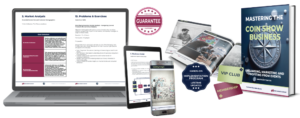
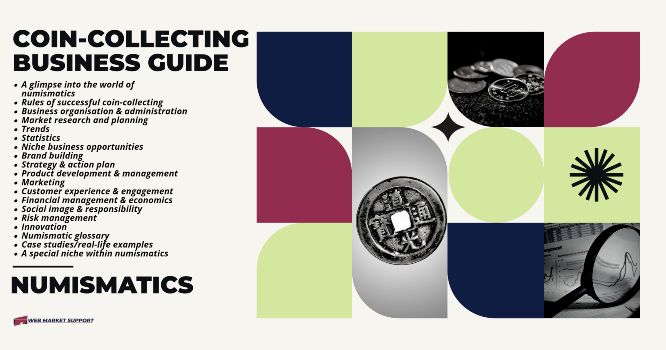
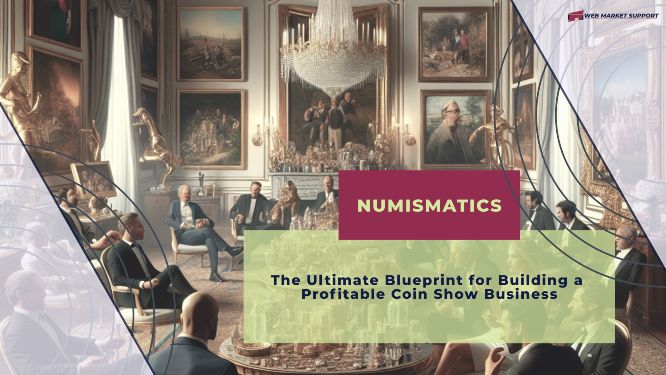
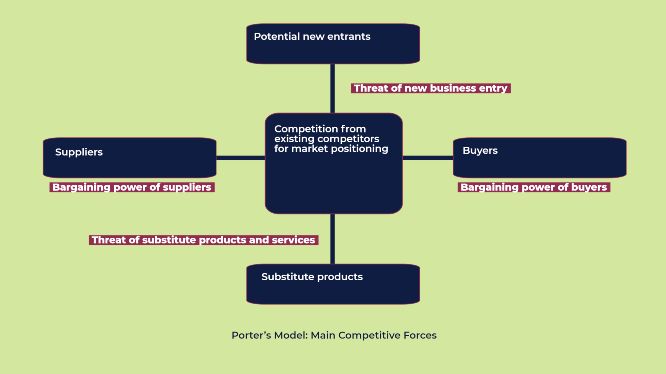

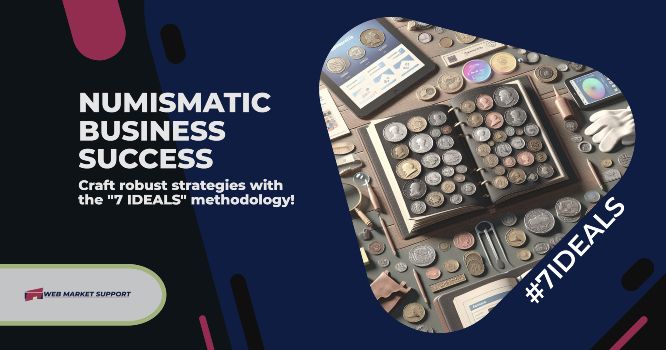


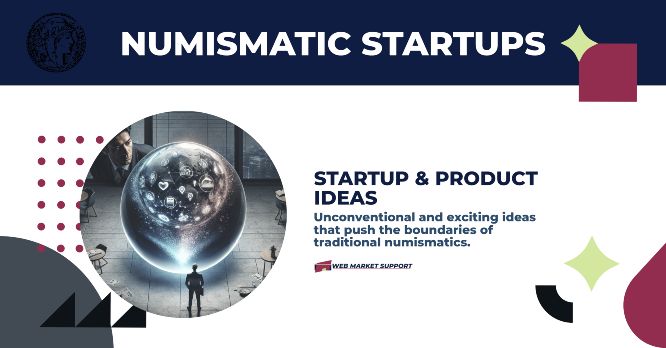




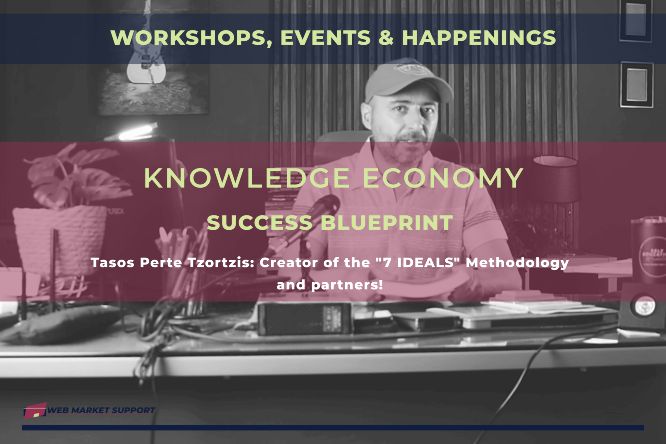
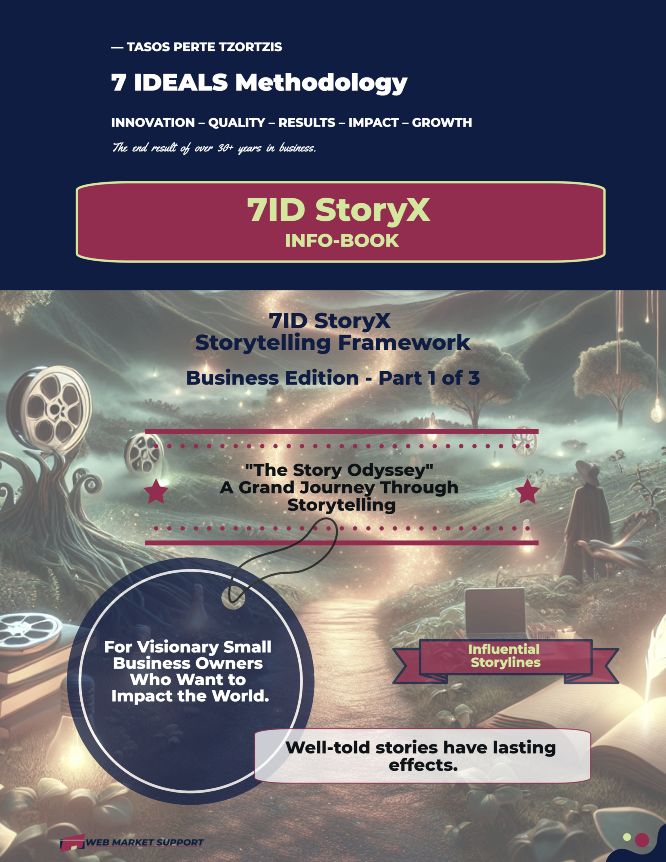




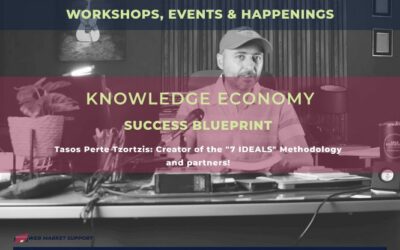

0 Comments